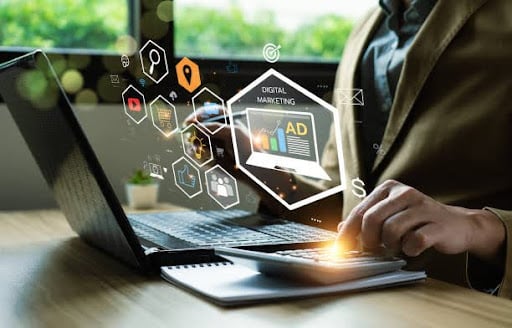
Are You Maximizing Your Digital Marketing ROI?
Spending thousands of dollars per month on marketing can be daunting for a small business if you’re uncertain of your ROI. But, if you understand your numbers and have a clear North Star for your marketing strategy, you don’t have to be afraid. Instead, you can get excited about the value it creates.
Why ROAS Isn’t the Full Story
You might have heard of ROAS (Return on Advertising Spend) and how it’s used to measure digital marketing success. It’s a straightforward calculation: revenue divided by ad spend. But while ROAS is helpful, it doesn’t always paint the full picture. For instance, it doesn’t consider the cost of goods sold or other overhead expenses. A high ROAS might look good on paper, but it doesn’t guarantee profit.
To truly understand your marketing efforts, you need to look beyond ROAS and dive into more detailed metrics. These will give you a clearer idea of how your marketing is performing and where you can make improvements.
Segmentation and Personalization
One effective way to boost your marketing ROI is through segmentation and personalization. Segmentation is the process of dividing your audience into smaller groups based on specific criteria, like age, location, or buying behavior. By doing this, you can tailor your messages to each group, making them more relevant and engaging.
For example, imagine you run an online clothing store. You could segment your audience into groups like young adults, middle-aged professionals, and seniors. Then, you can create personalized campaigns for each group. Young adults might respond well to trendy fashion tips, while seniors might appreciate comfort and practicality. Personalization can have one of the greatest impacts on engagement and conversion rates.
Using Automation Tools
Automation tools can be used to streamline your marketing campaigns and reduce overhead costs. These tools handle repetitive tasks, like sending emails, posting on social media, tracking website analytics, and even helping you run calculations in spreadsheets. By automating these tasks, you save time and can focus on more strategic activities.
Automation also ensures consistency throughout your campaigns, making it easier to maintain a steady flow of communication with your audience. Plus, it reduces the risk of human error. This helps you ensure your messages are sent out accurately and on time.
Key Performance Indicators (KPIs) to Measure ROI
To measure your ROI effectively, you need to track the right Key Performance Indicators (KPIs). Here are some essential KPIs to consider:
- Marketing Efficiency Ratio (MER): This ratio compares your total revenue to your total marketing spend. To calculate MER, divide your total revenue by your total marketing expenses. A higher MER indicates that your marketing efforts are more efficient and effective.
- Customer Acquisition Cost (CAC): This is the total cost of acquiring a new customer, including marketing and sales expenses. To calculate CAC, divide your total marketing and sales costs by the number of new customers acquired in a given period. Lowering your CAC means you’re getting more customers for less money.
- Customer Lifetime Value (CLTV): This metric estimates the total revenue a customer will generate during their relationship with your business. To calculate CLTV, multiply the average purchase value by the average number of purchases per year, then multiply that by the average customer lifespan. Increasing CLTV means you’re retaining customers and generating more revenue from each one.
By focusing on these KPIs, you can gain a better understanding of your marketing performance and make informed decisions to improve your ROI.
The Power of A/B Testing
A/B testing is a powerful technique for optimizing marketing efforts. It involves creating two versions of a campaign element, like an email subject line or a landing page, and testing them to see which one performs better. By comparing the results, you can identify what works best for your audience and make investments that are statistically proven to generate a higher ROI.
For example, you might create two different subject lines for a sales email. Send version A to 10 percent of your audience and version B to another 10 percent. Whichever version gets more opens and clicks is the winner. You then send this subject line to the remaining 80 percent (and use it as your control for future campaigns).
Leveraging AI for Predictive Analytics
Artificial Intelligence (AI) can take your marketing to the next level by providing predictive analytics. It’s able to analyze data to predict future trends and behaviors, which can help you make proactive decisions and stay ahead of the competition.
AI truly is amazing. It can predict which products your customers are likely to buy based on their past behavior. You can then create targeted campaigns to promote those products, increasing your chances of making a sale. AI can also help you identify potential customer churn, so you can take steps to retain those customers before they leave.
Adding it All Up
Maximizing your digital marketing ROI involves more than just looking at ROAS. By using segmentation and personalization, integrating automation tools, conducting A/B testing, and leveraging AI for predictive analytics, you can enhance your marketing efforts.
Plus, by arming your team with the right KPIs, you can measure your success and make data-driven decisions to help your business grow!
Interesting Related Article: “Unlocking the Secrets to Trade Spend ROI Calculation“

